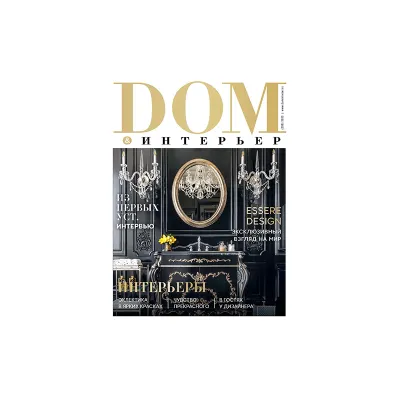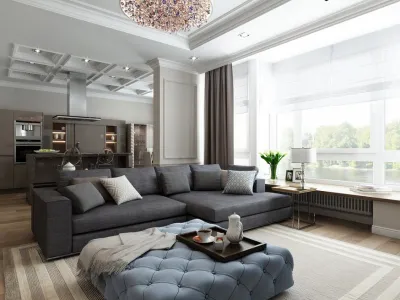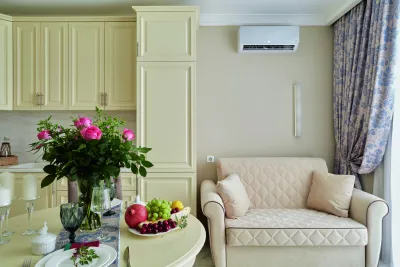Чистое море и модные ночные клубы привлекают известных людей и простых любителей хорошей жизни. Среди самых популярных направлений – Форте дей Марми, курорт Эудженио Монтале и Томаса Манна. «Форте» выделяется своими роскошными объектами недвижимости, в которых сочетаются ландшафтная архитектура и дизайнерские решения, позволяющие насладиться жизнью
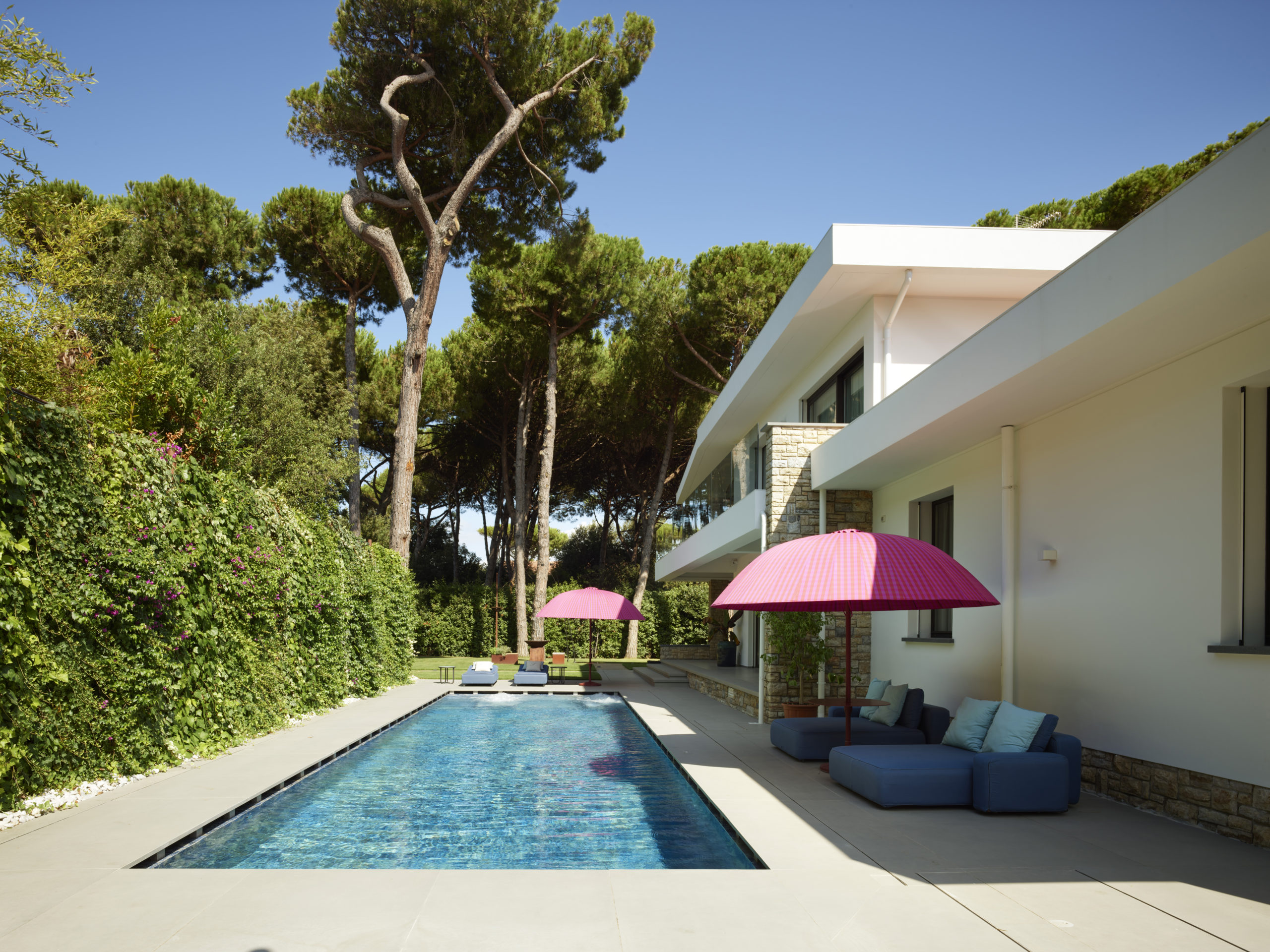
На любимом россиянами роскошном итальянском курорте закончилась реставрация виллы 1960 года под руководством Массимо Иоса Гини.
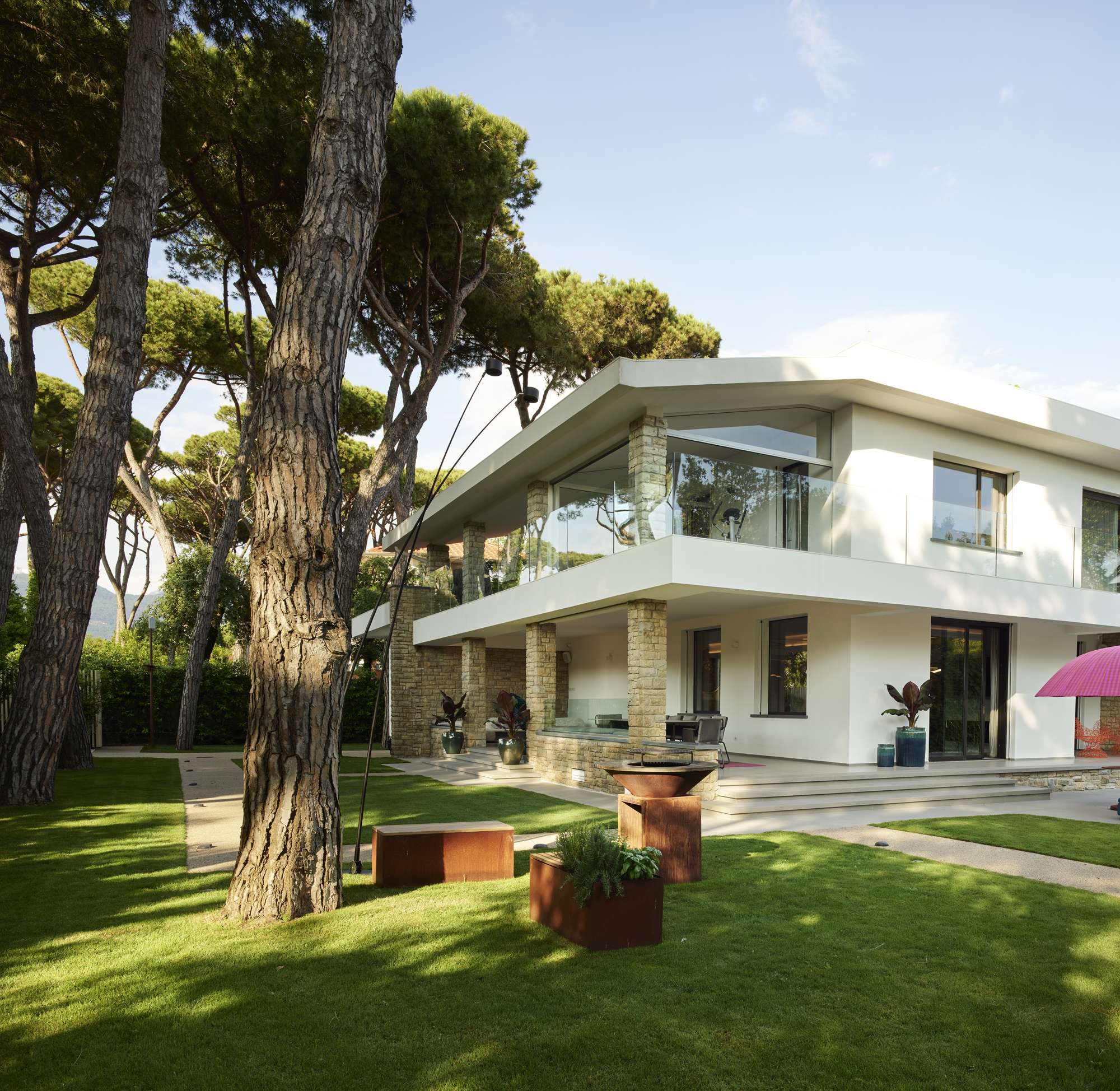
Проект представляет из себя виллу из шестидесятых, которая рассчитана на одну семью и имеет рациональные структуры, которые подчёркиваются большими пространствами как во внешнем, так и во внутреннем интерьере. Всё сооружение находится в неразрывном балансе с окружающей виллу средой, особое место в которой занимают древние средиземноморские сосны, создающие неповторимый образ для этого места.
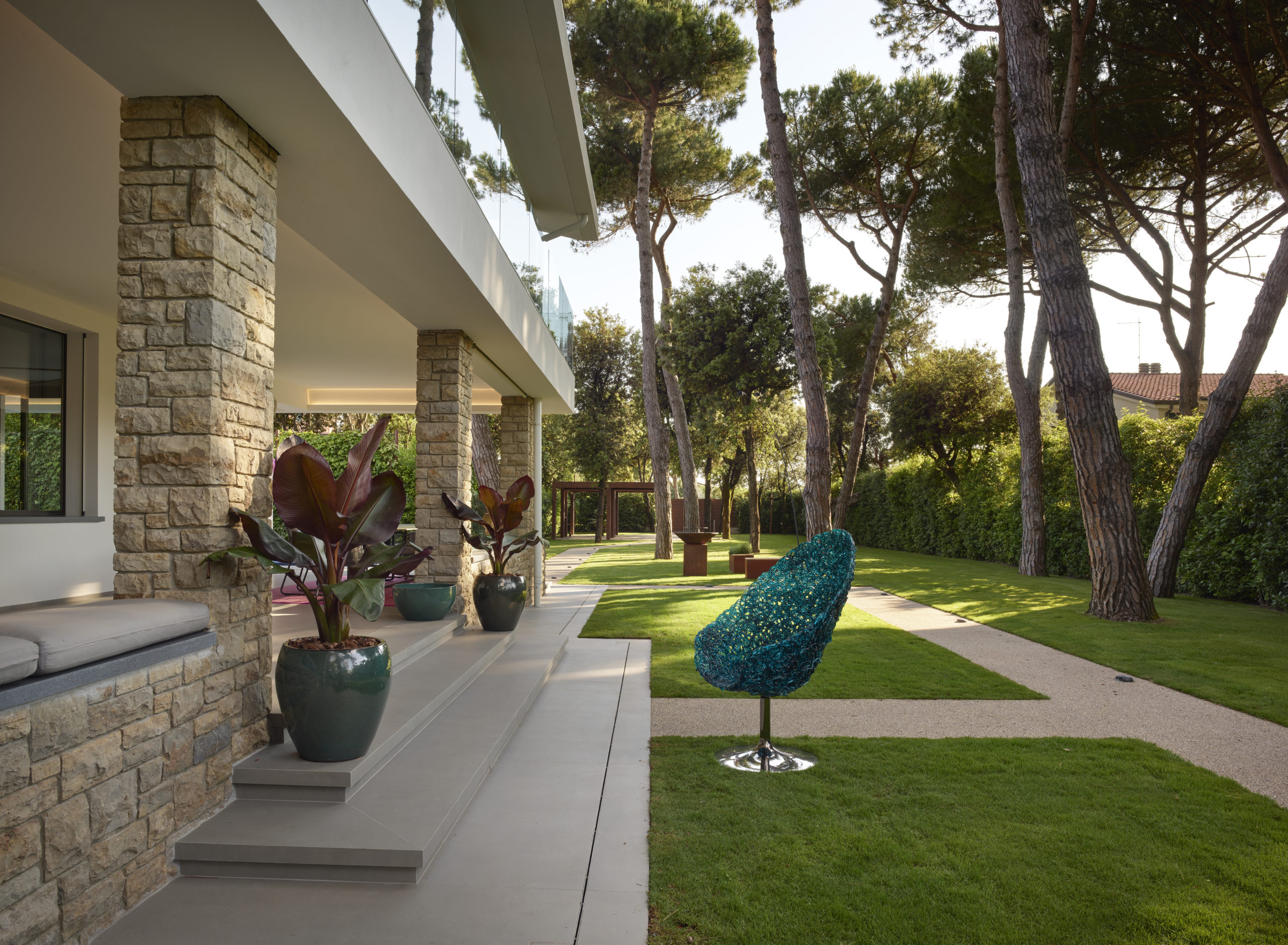
На первом этаже находится большая гостиная с обеденной зоной и большим камином, через простор которого можно наблюдать за окружающими просторами. Зона первого этажа предназначена для гостей и имеет три спальни с отдельными ванными комнатами, кроме того, имеется маленькая отдельная лоджия для персонала.
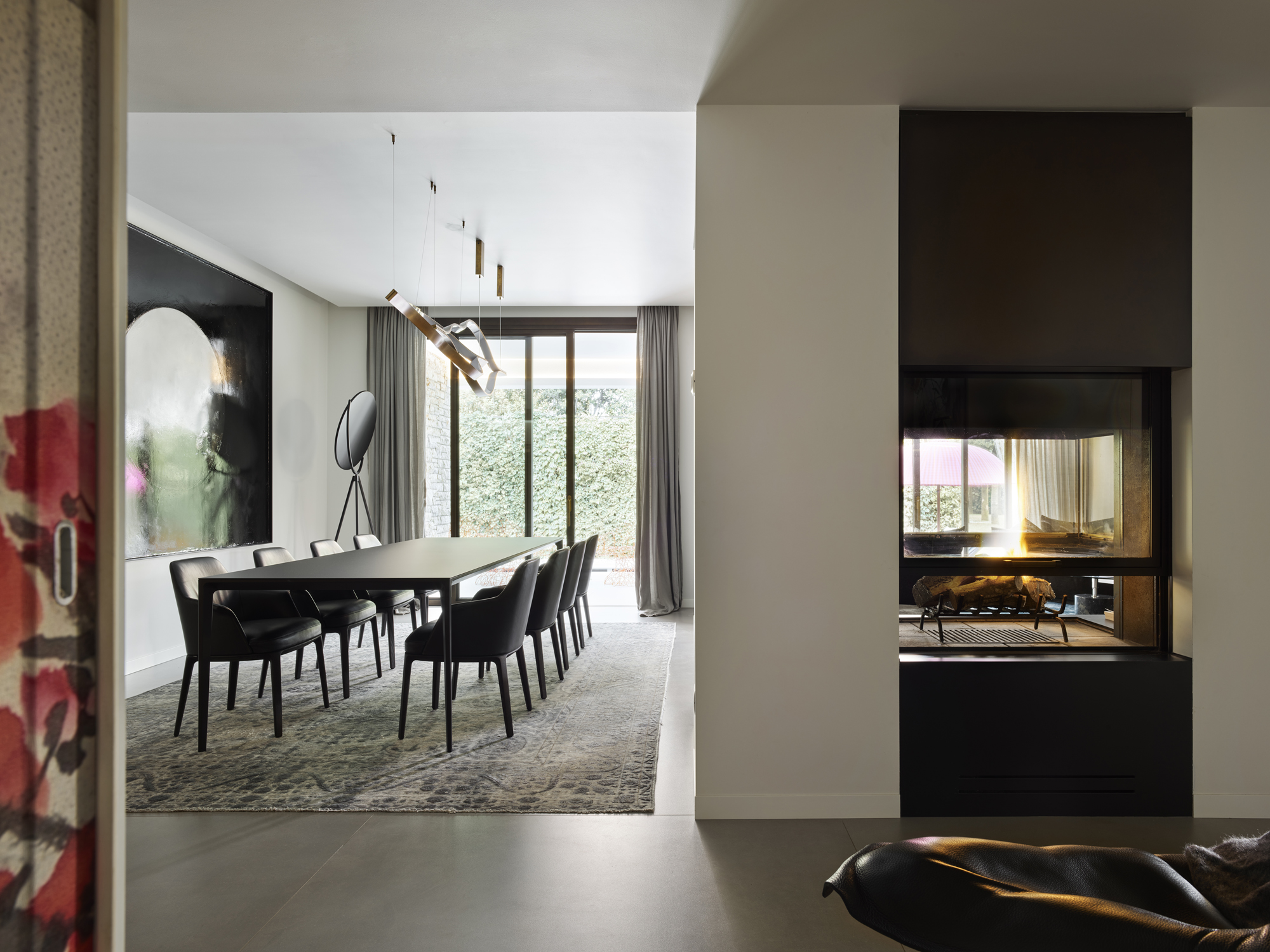
Большая кухня, которая была дополнительно увеличена, выходит на гостиную площадь, вид на которую открывается сквозь стеклянную стену, проходящую по дуге и связывающую каминное пространство со входом, садом, плавательным бассейном и большим окном, которое выходит на огород.
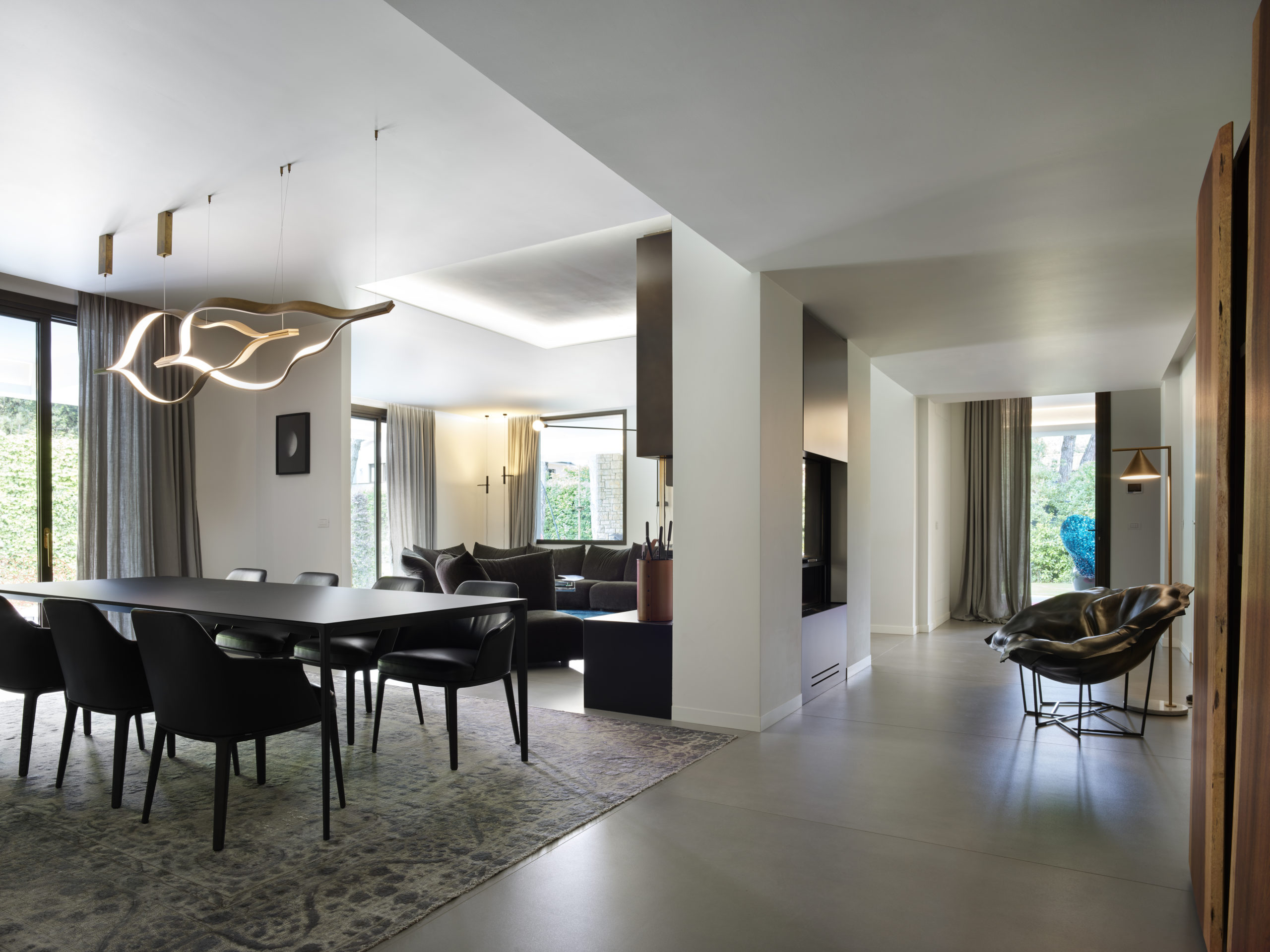
Использование больших окон позволяет уменьшить видимость границы между внешним и внутренним мирами проекта. Дополнительно эту идею единства подчёркивает идентичное напольное покрытие как на придомовой, так и на внутридомовой территориях.
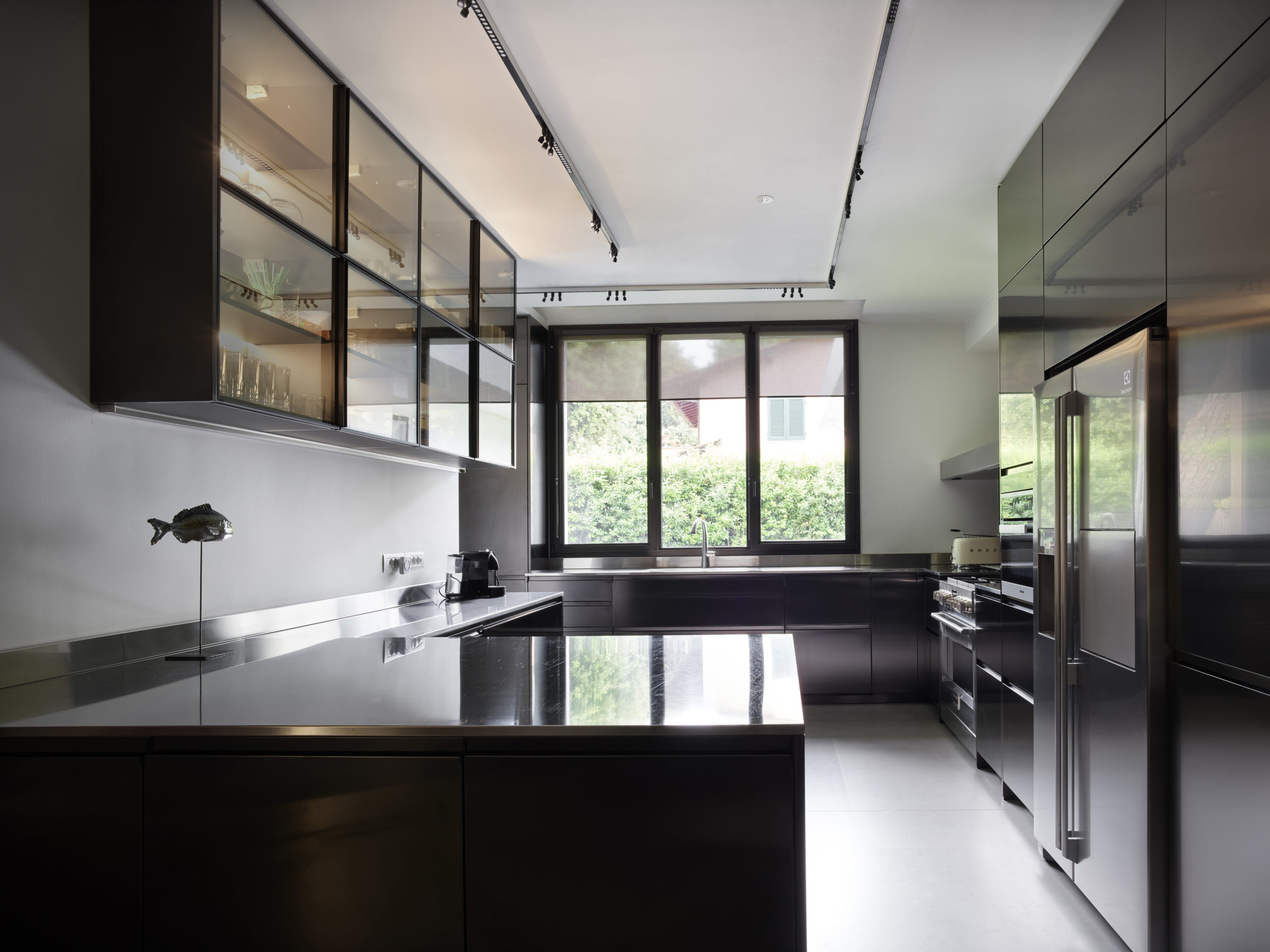
В подвале отведено специальное место для вина – такова была просьба владельцев, которые являются истинными ценителями этого напитка. Пространство сделано таким образом, что оно будто само повествует и предлагает погрузиться в историю той или иной бутылки, продегустировав её манящее содержимое.
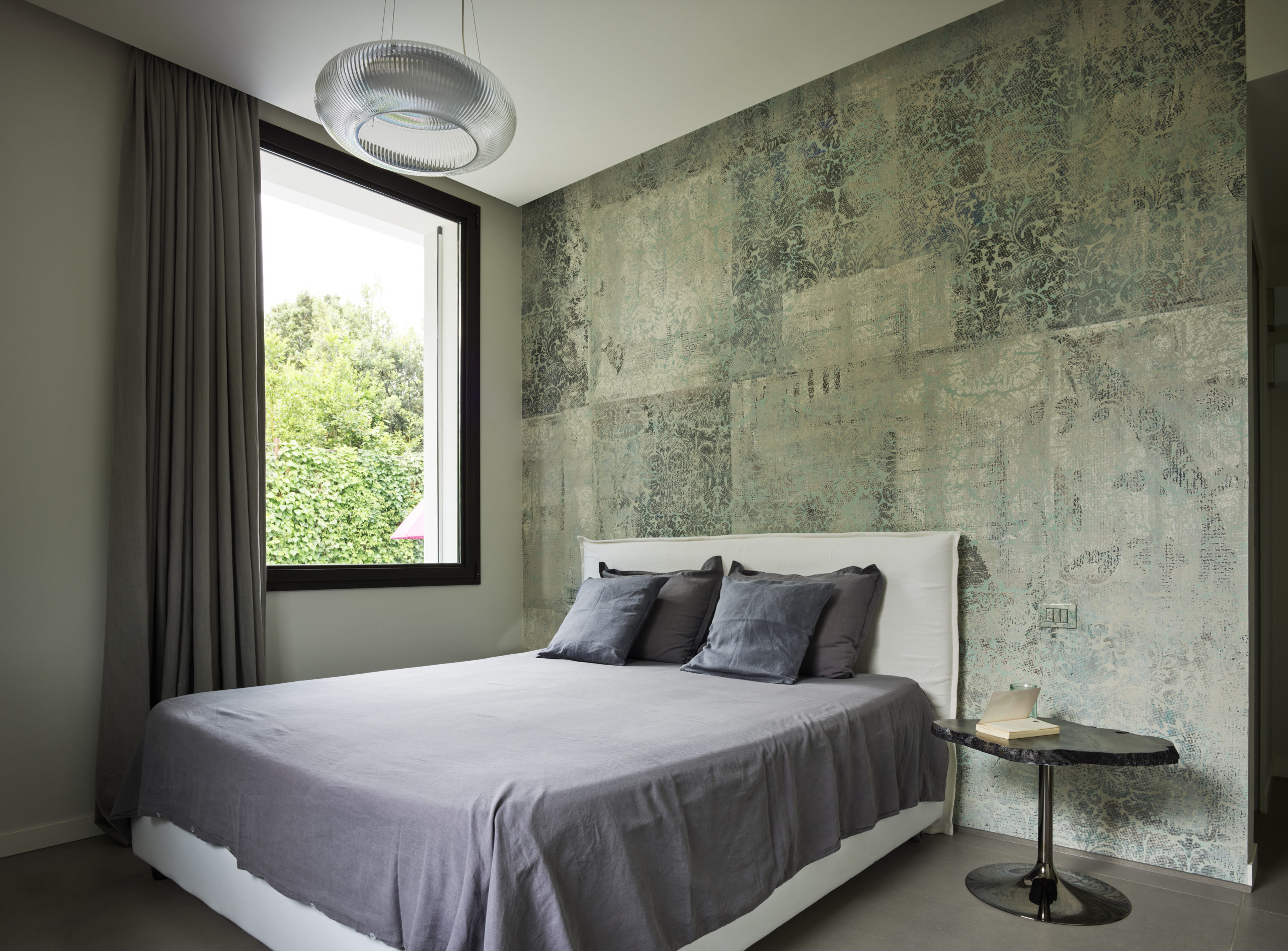
Пройдя лестницу с хрустальной балюстрадой можно попасть на второй уровень, где находится самая приватная и скрытая от посторонних глаз часть дома, предназначенная лишь для хозяев дома и их семьи.
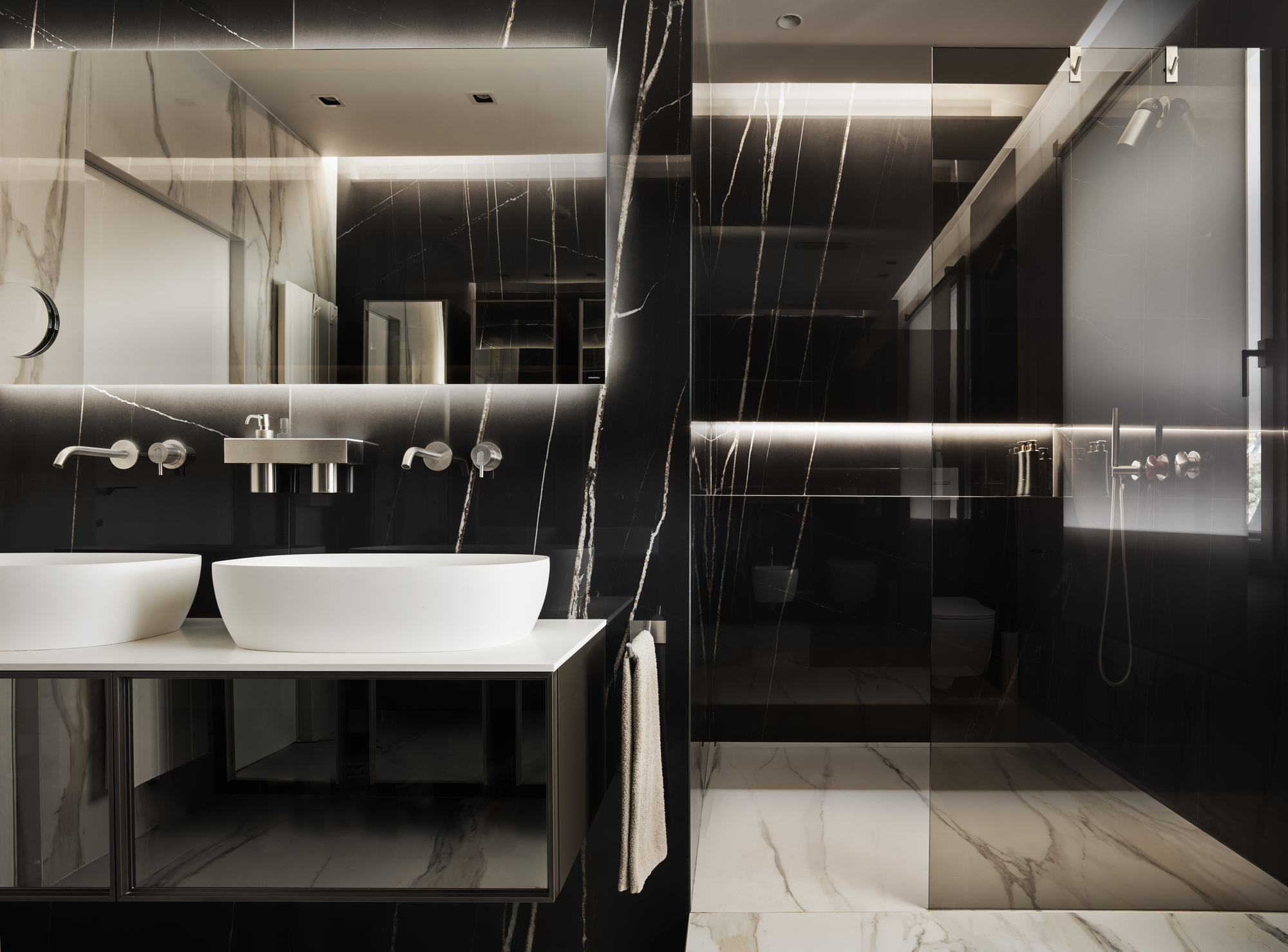
На нём расположены: две спальные комнаты для детей, большая хозяйская спальня с гостиной, собственная ванная комната, имеющая персональный выход на крытую террасу, где располагается оборудование для занятия фитнесом, откуда сквозь листву сосен можно увидеть лазурное море.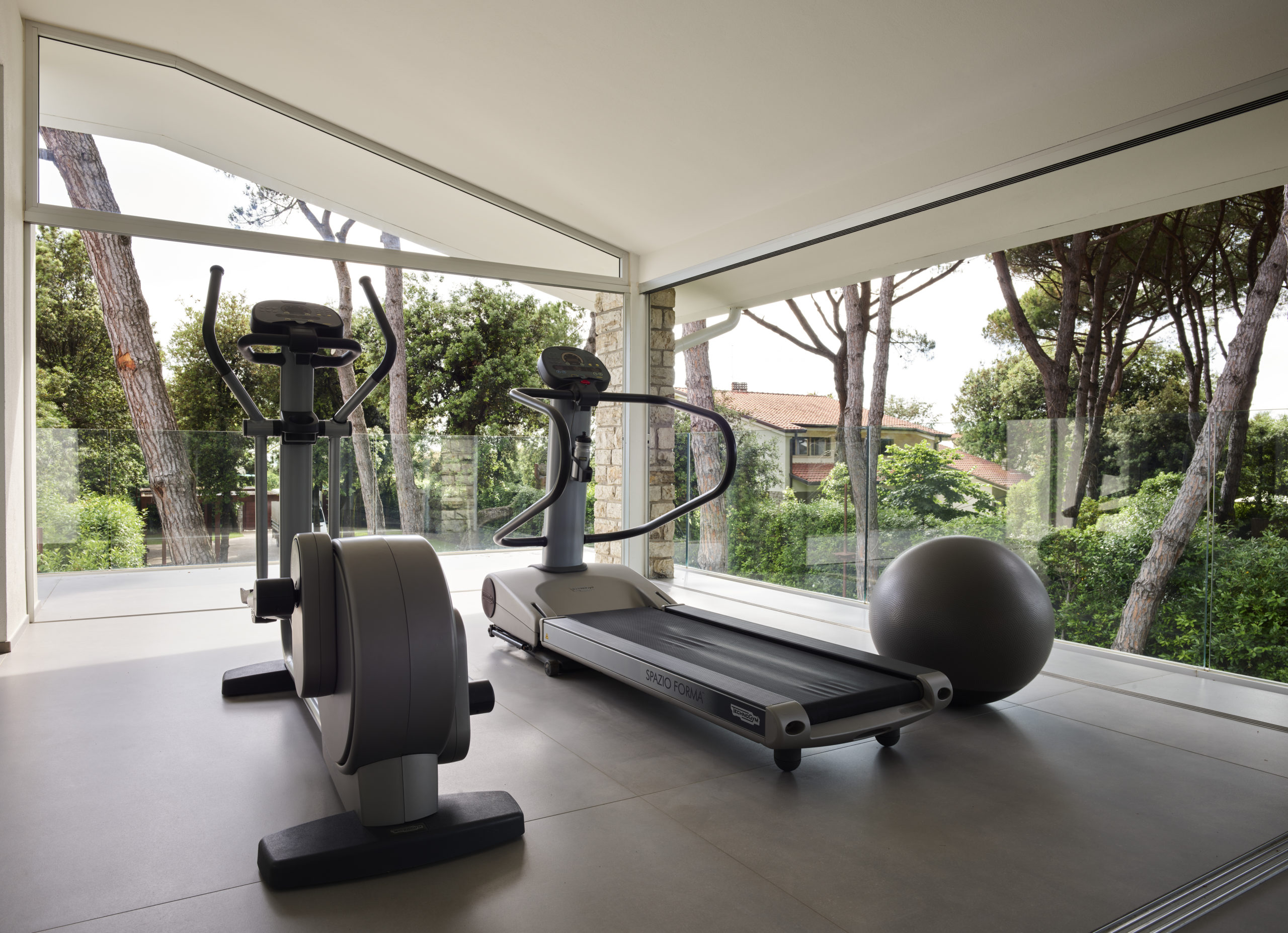
Автор проекта: Массимо Иоса Гини / www.iosaghini.it
***
In the Italian favourite luxury resort of the Russians, Forte dei Marmi, Massimo Iosa Ghini designs a beachfront gorgeous Villa.
In the heart of Versilia, the pleasure of living, between landscape architecture and design.
A trademark in Forte dei Marmi, a single-family villa of the sixties, a rational structure with volumes defining the large external and internal openings, in balance with all that surrounds it, starting from the big maritime pines that dialogue with the house.
Massimo Iosa Ghini is the architect called upon to renovate the entire house, concentrated on finding a new meaning for the garden surrounding the property, the two levels as well as the basement.
“It was mostly a matter of cleaning things up, bringing a sense of lightness, in keeping with the desires of the owners. I thought about a project by Adalberto Libera, another house designed for the Tyrrhenean seaside, and I found input for the passage volumes of the fireplace, enabling me to exploit a load-bearing pillar to underscore the visual relationship between various spaces.”
The villa, with an outer portico and a covered terrace, is inserted in the Mediterranean context of the pinewood, in Versilia. The distribution layout was suggested in a natural way by the original structure of the house. Respecting the existing, Iosa Ghini revises the volumes, creating large openings between inside and outside in a sort of geometric balance: “I decided to reorganized the ground floor plan, making the spaces more livable and rational.”
On the ground floor, a large living area with dining zone has a big fireplace through which allows in transparency the visual relationship through the vast environment. An area of the ground floor is dedicated to guests, consisting of three guestrooms with private bathrooms; plus, a small independent lodging for household staff.
The large kitchen, enlarged during the project, overlooks the living area through a glass wall cut, in axis with the passing fireplace, allowing a visual connection with the entrance, the garden and the swimming pool; a large window overlooks directly the vegetable garden contained in large raised corten tanks.
The use of large windows allows an open relationship between inside and outside; the continuity of the flooring also accentuates this connection.
In the basement, a space has been set aside for wine. “This was a request of the owners, true wine connoisseurs, a space that creates a narrative of bottles and vintages, to welcome guests for tastings.”
Staircase, with crystal balustrade, leads to the upper level where the most private part of the house dedicated to the family is located: two bedrooms for the children and a large master bedroom with living room, private bathroom, which also opens onto a covered outdoor terrace with fitness gear and from which you can see, through the foliage of pine trees, the sea. “I am very curious about the work of others and I like to choose pieces that are not necessarily my own creations. When the job is almost finished, I may add at most a pair of mu designs. The only things that are mine in this décor are the Cannettata lamp designed for De Majo Illuminazione and the Leva lamps by Leucos. I think it is an extraordinary project, in beech, with very thin parts.”
A large outdoor hydromassage swimming pool and connected dressing rooms complete the project. The use of solar and photovoltaic panels allows an almost total
autonomy of the house also for the heating of the pool water equipped with a treatment system for salt purification. “We have added solar panels so that much of the house and the outdoor pool are powered by thermal and photovoltaic solar energy. This type of approach is always pertinent, never banal.”














